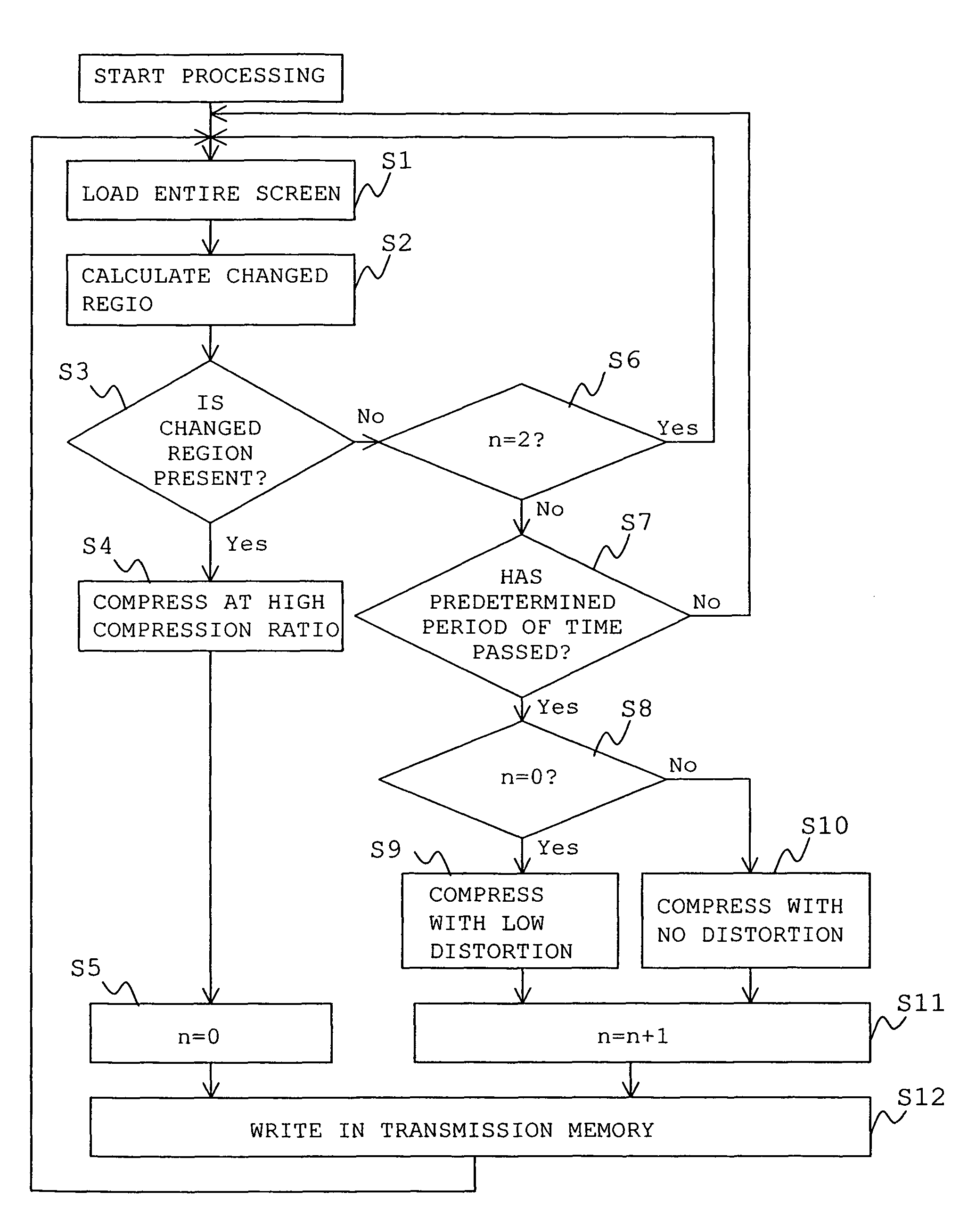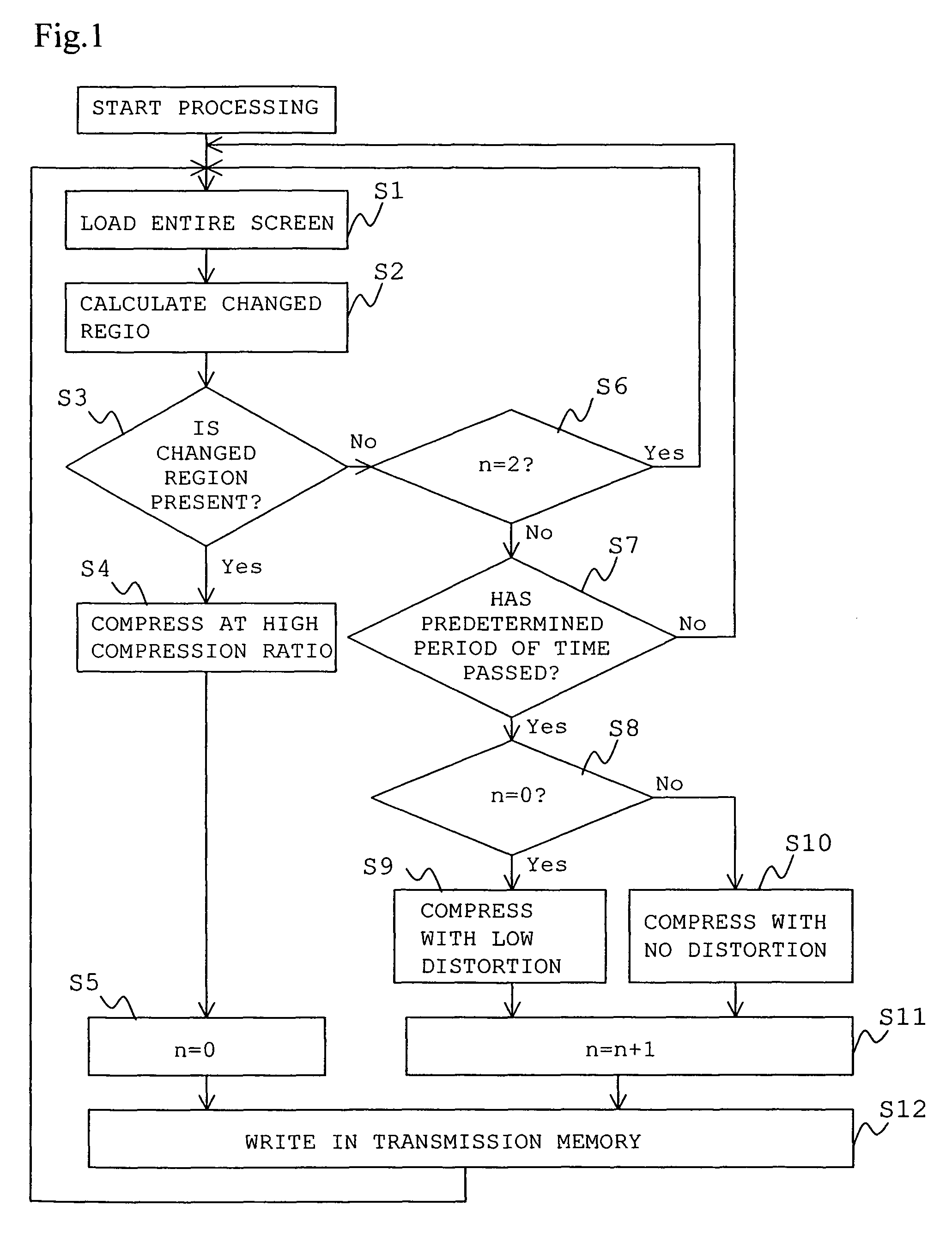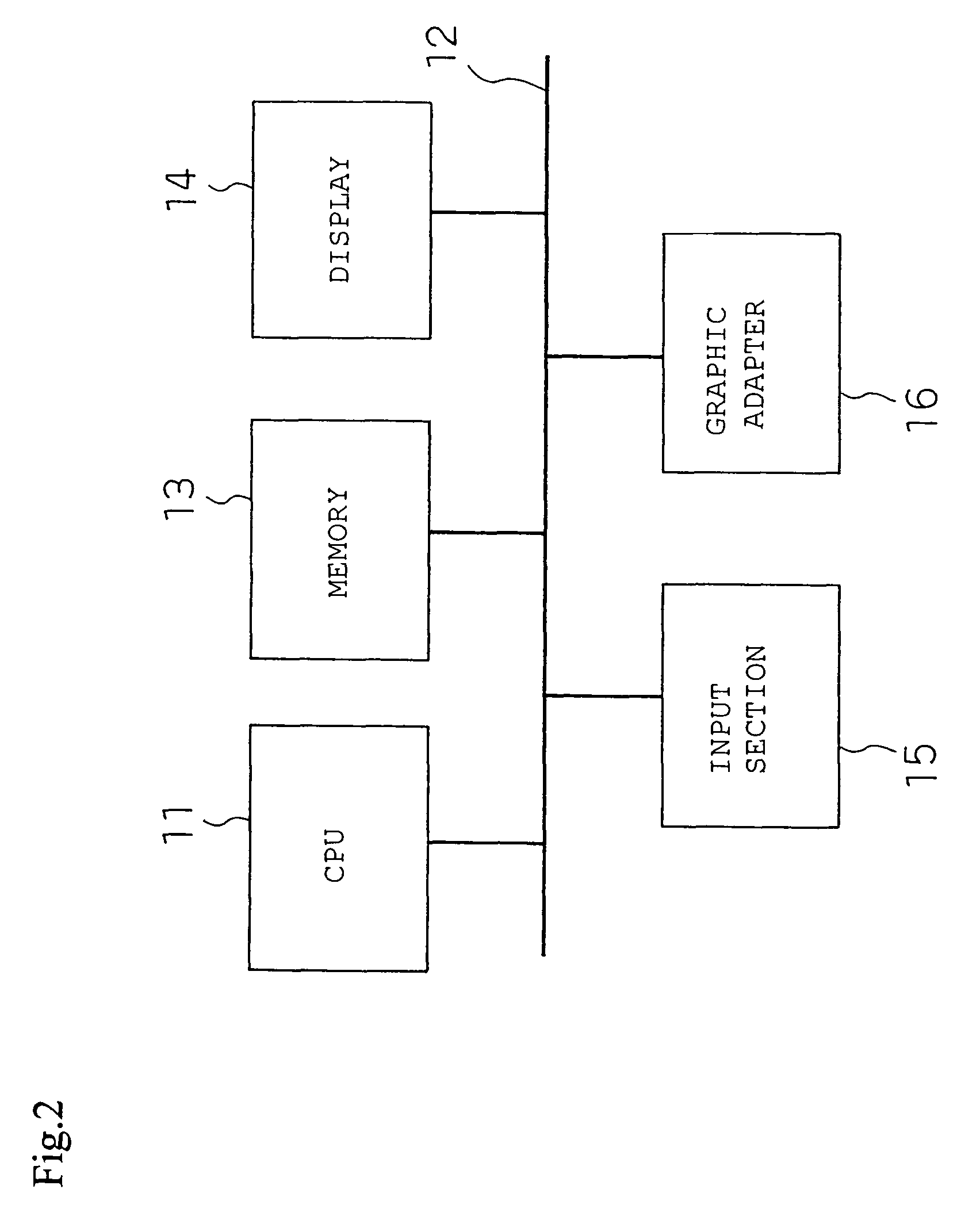Image processing and transmission using high and low compression ratios depending on image change conditions
a technology of image change and compression ratio, applied in the field of image processing and transmission using high and low compression ratios depending on image change conditions, can solve the problems of difficult to achieve high-speed transmission, difficulty in achieving high-speed, and take a certain amount of time, so as to prevent image degradation, reduce volume, and reduce the effect of compression ratio
- Summary
- Abstract
- Description
- Claims
- Application Information
AI Technical Summary
Benefits of technology
Problems solved by technology
Method used
Image
Examples
first embodiment
[0123]An image processing method according to a first embodiment according to the present invention will be explained. In this embodiment, images displayed on a screen of a personal computer (hereinbelow, referred to as PC) are intended to be consecutively loaded and compressed. FIG. 2 is a block diagram illustrating an image processing device of the present embodiment, while FIG. 3 schematically illustrates a PC screen.
[0124]In FIG. 2, a CPU 11 is connected to a bus line 12. A memory 13 and a display 14, as well as an input section 15 and a graphic adapter 16, are connected to the bus line 12 to constitute the image processing device.
[0125]Next, an image processing method of the present embodiment will be explained in detail with reference to a flowchart shown in FIG. 1. At Step S1, contents of the whole PC screen are loaded into the memory in the PC. The contents of the whole PC screen are temporarily stored in an image memory (frame buffer or GRAM) and the image is periodically r...
second embodiment
[0153]An image processing method according to a second embodiment of the present invention will be explained. In this embodiment, the images displayed on the screen of the personal computer (hereinbelow, referred to as PC) is consecutively loaded and compressed. In other words, the contents of the whole PC screen are temporarily stored in the image memory (frame buffer or GRAM) and the image is periodically read therefrom to be compressed in the present embodiment. FIG. 6 illustrates the PC screen schematically, which shows an example in this embodiment to process the image by dividing it into four blocks of regions 26 to 29.
[0154]FIG. 5 is a flowchart illustrating the image processing method according to the second embodiment of the present invention. Hereinbelow, the method will be explained in detail with reference to FIG. 5.
[0155]At Step S21, the whole screen is captured. At Step S22, the image is divided into the blocks. In the example shown in FIG. 6, it is divided into the fo...
third embodiment
[0167]FIG. 7 is a block diagram of a display system according to a third embodiment of the present invention. In FIG. 7, reference numeral 31 represents a projector, reference numeral 32 represents a screen of the image from the projector to be projected, reference numeral 33 represents a PC, and reference numeral 34 represents a wireless LAN transceiver. In the display system, the image displayed on the PC 33 is loaded into the memory. The loaded image is then compressed and transmitted to the projector 31 via the wireless LAN transceiver 34. The projector 31 receives the compressed image and expands the image to be displayed on the screen 32. As a result, the image displayed on the screen of the PC 33 may be displayed on the screen 32 as well. It would be appreciated that the PC 33 is an image signal generating apparatus of generating an image signal, and the wireless LAN transceiver 34 constitutes a transmitting apparatus of transmitting the generated image signal. The projector ...
PUM
 Login to View More
Login to View More Abstract
Description
Claims
Application Information
 Login to View More
Login to View More - R&D
- Intellectual Property
- Life Sciences
- Materials
- Tech Scout
- Unparalleled Data Quality
- Higher Quality Content
- 60% Fewer Hallucinations
Browse by: Latest US Patents, China's latest patents, Technical Efficacy Thesaurus, Application Domain, Technology Topic, Popular Technical Reports.
© 2025 PatSnap. All rights reserved.Legal|Privacy policy|Modern Slavery Act Transparency Statement|Sitemap|About US| Contact US: help@patsnap.com



